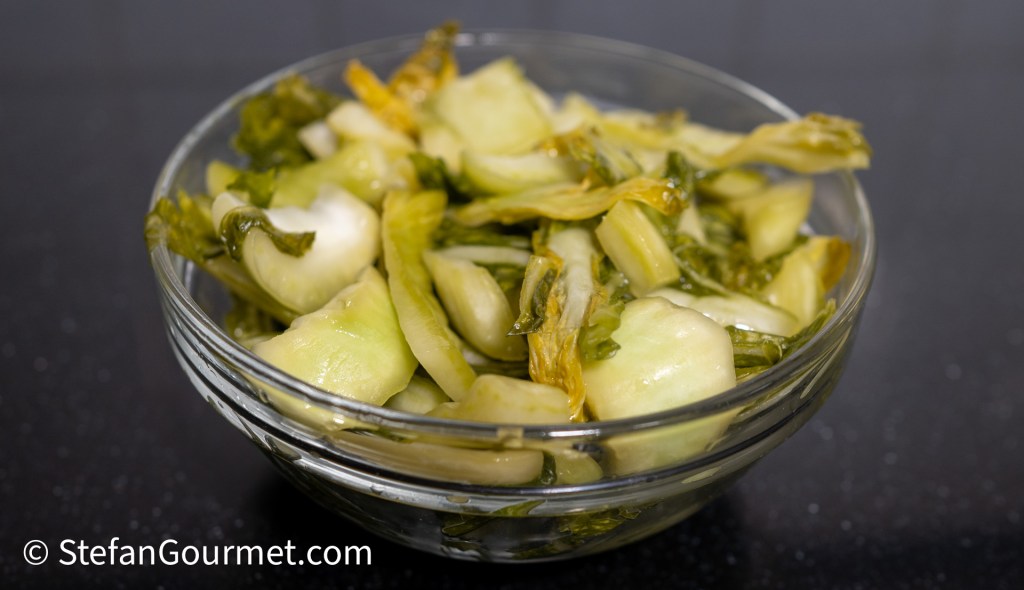
Thai pickled mustard greens (ผักกาดดอง / Pak Gad Dong / Phak Kat Dong) is an essential ingredient for Thai dishes like Khao Soi or Khao Ka Moo. It is basically an oriental version of sauerkraut. I don’t care so much for the store-bought vacuum packed version, and I liked it much better when I was in Thailand. The flavor there was more ‘fresh’. And so I decided to see if I could make it from scratch. It turned out that is quite easy; the hardest part is to source the fresh mustard greens. I found them at the Asian supermarket under the Chinese name Gai Choy. I used this recipe as the basis, with one improvement. I really liked the result; it was very similar to what I remember from Thailand. I provide a parametric recipe, so you can weigh the amount of mustard greens and then adjust the other ingredients accordingly. This recipe uses vinegar; I think it should also be possible to allow the natural fermentation process to make it sour. That would take more time.
Ingredients
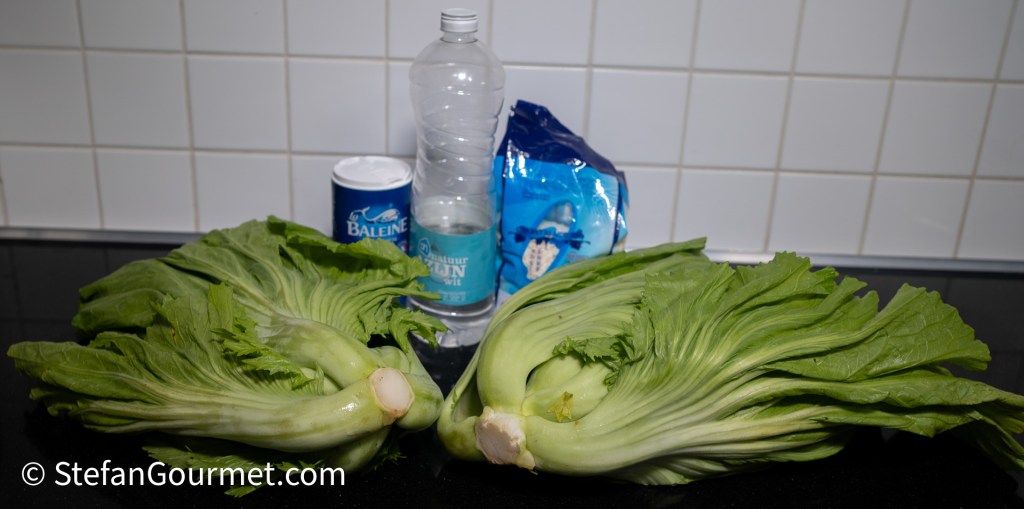
- 900 grams (2 lbs) mustard greens, net weight without the trunk [100%]
- 200 grams (1 cup) sticky rice [22%]
- 1500 grams (6 cups) water [167%]
- 150 grams salt [17%]
- 200 ml (1/2 cup + 1/3 cup) distilled vinegar [22%]
Instructions

Combine the water with the sticky rice. Soak the rice in the water for at least 15 to 20 minutes.
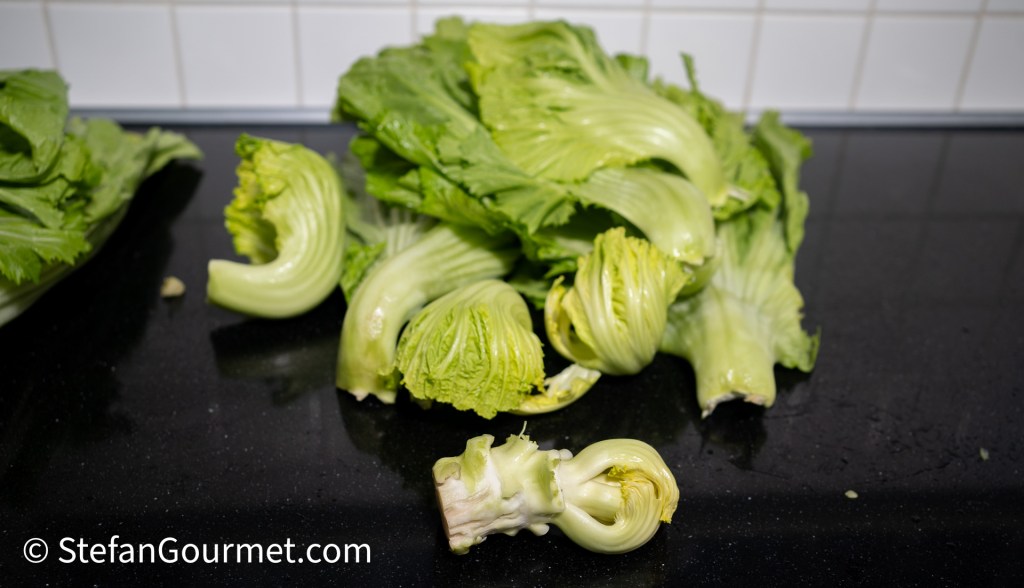
In the meantime, separate the leaves of the mustard greens from the trunk, and discard the trunk. Weigh the leaves and calculate the other ingredients accordingly. I had 1458 grams of leaves, so I calculated 22% * 1458 = 324 grams of sticky rice and vinegar, 17% * 1458 = 247 grams of salt, and 167% * 1458 = 2434 grams (or mls) of water.
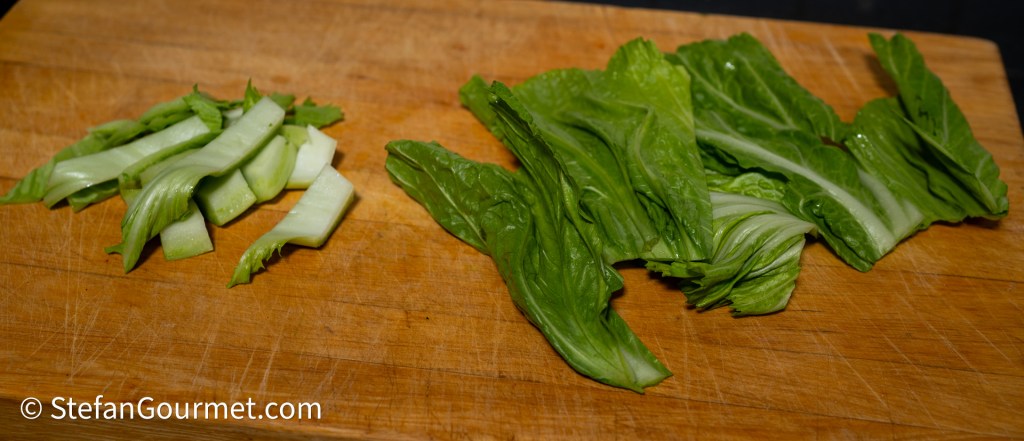
Separate the leaves into the tough stems (white part) and the soft leaves (green part). Chop the stems more finely than the leaves, as the leaves will shrink when you pickle them.
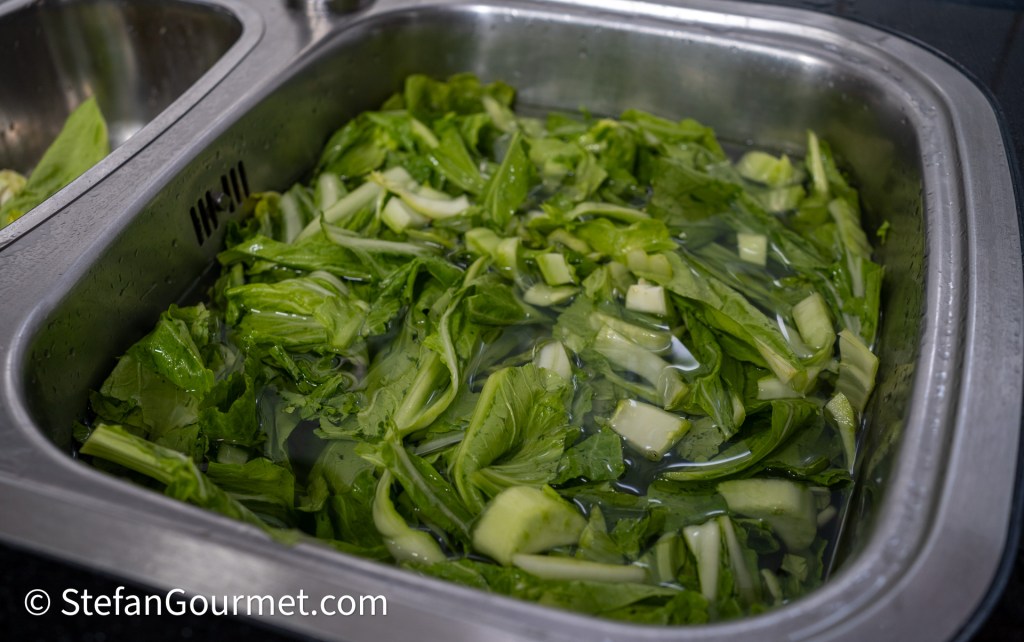
Wash the leaves well. If you notice any sand after draining the water away, wash them again, and repeat until there is no more sand. Drain the leaves.
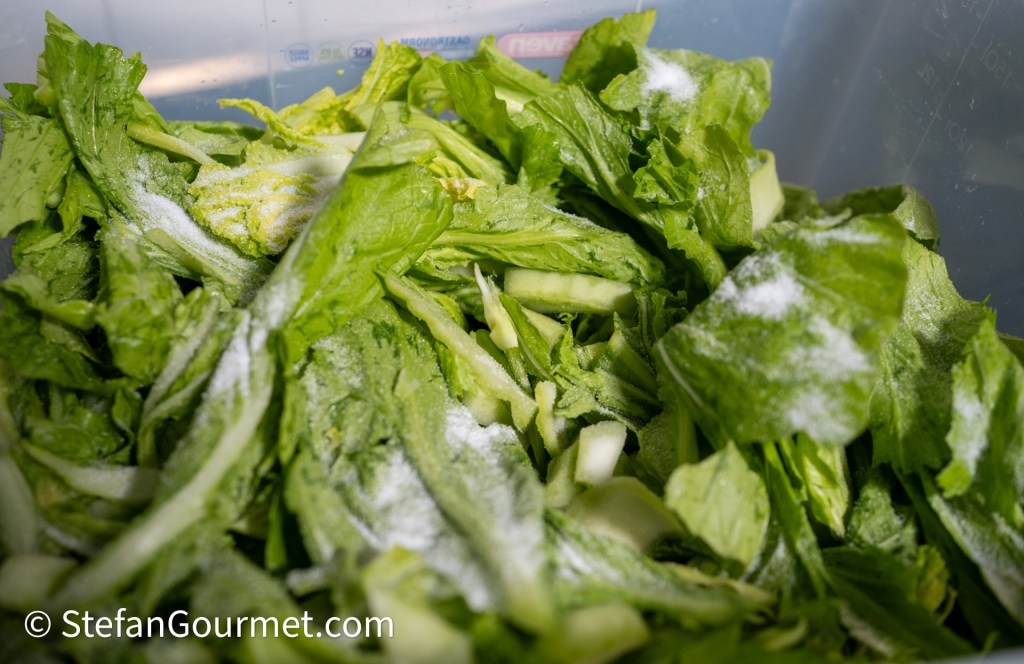
Put the leaves in a container and sprinkle the salt on top.
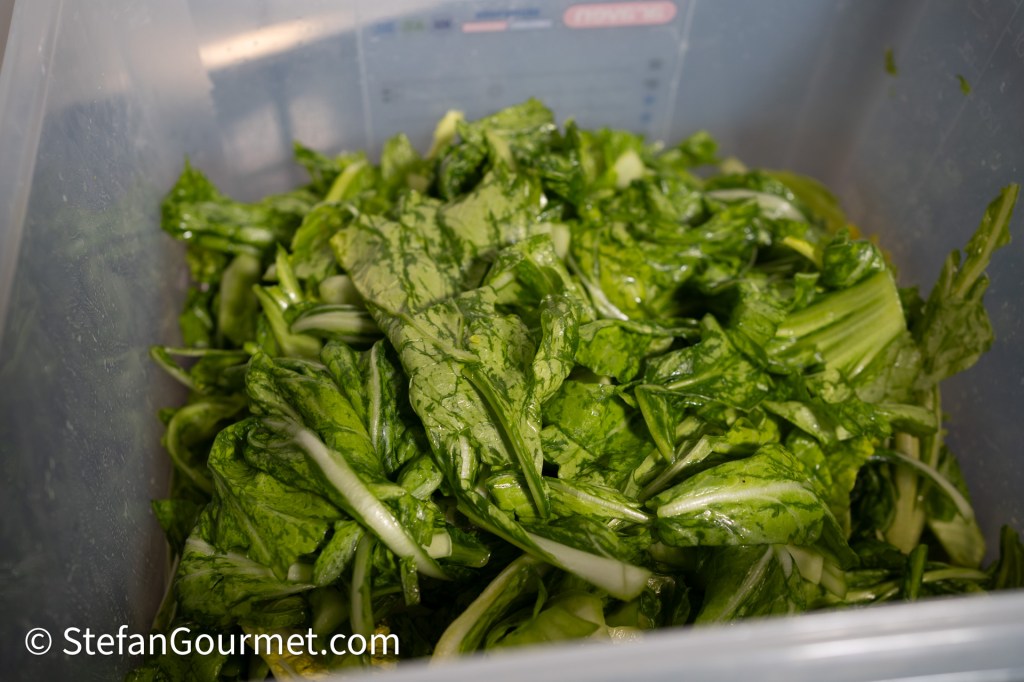
Massage the salt into the leaves with your hands, until the leaves look wilted.
The recipe stated to rub the leaves with salt and to dissolve the salt in the vinegar. It was not clear if the salt to rub the leaves with was to be taken from the total amount of salt and dissolving the salt in the vinegar didn’t really work. So this way makes more sense to me, and the amount of salt in the result seemed correct to me.
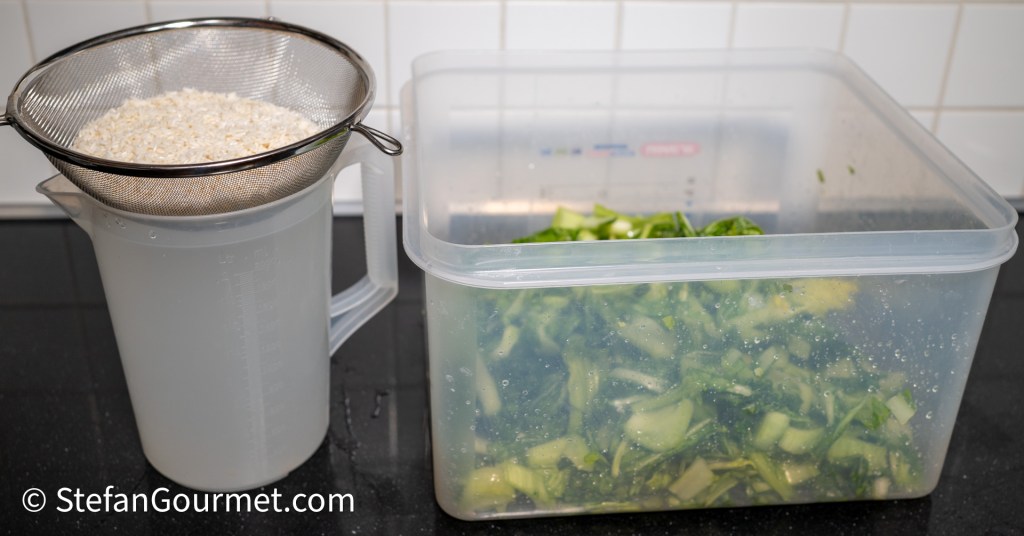
Drain the rice, and reserve both the soaking water and the rice.
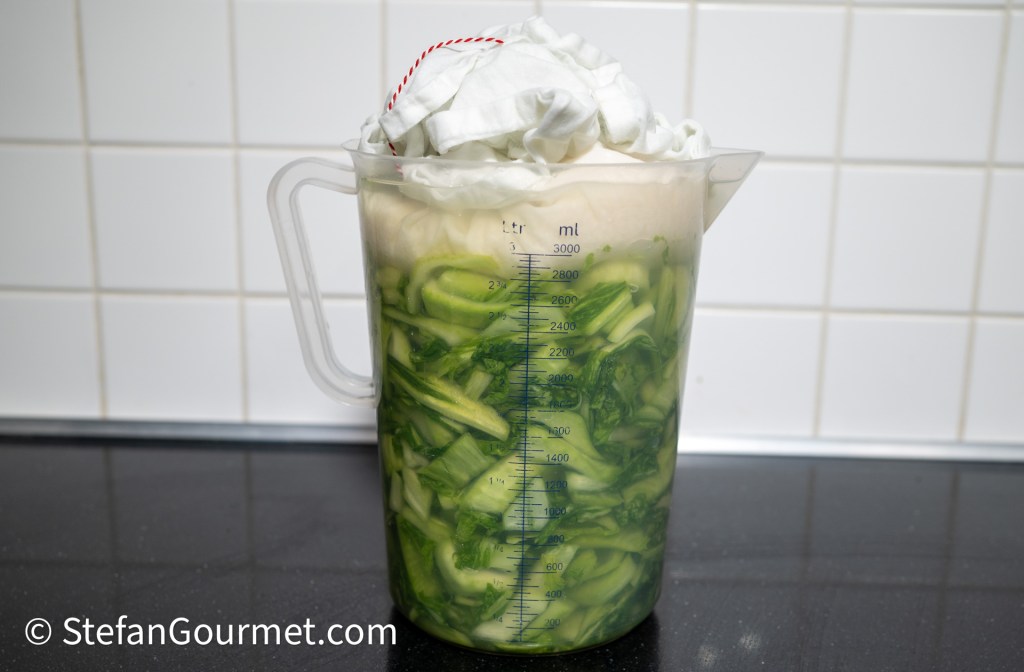
Put the mustard greens into a container, and pour the vinegar on top. Then add the water until the greens are barely covered. It is easiest to use a narrow type of container like the measuring jug that I used. Put the rice on a cheese cloth or old (but clean) tea towel, make a bundle, and tie it close with some twine or elastic band. Place this bundle on top, to make sure all of the greens are submerged in the brine.
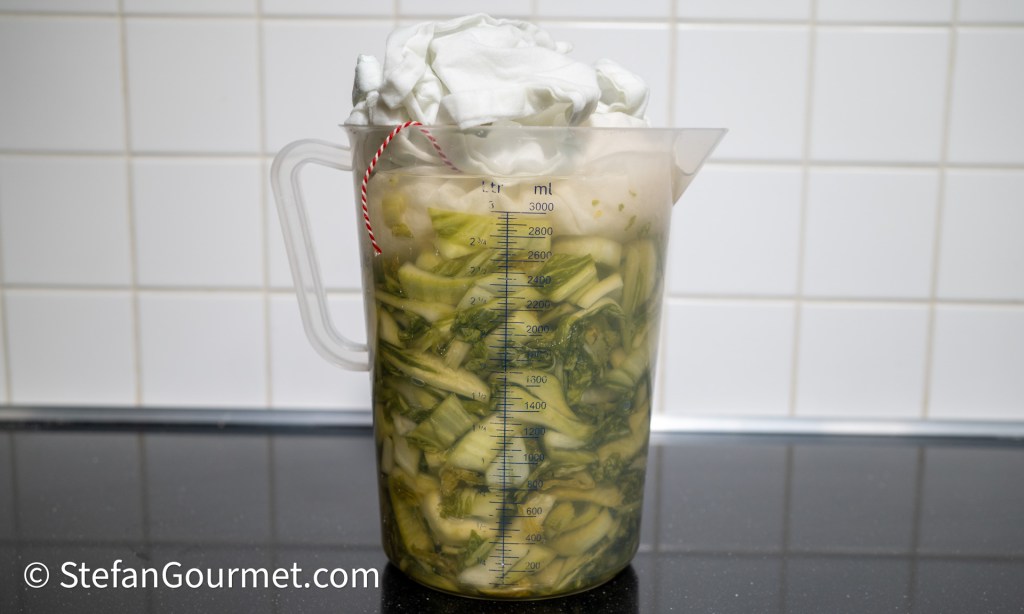
Allow the greens to pickle and ferment at room temperature for 2-3 days. The color will change from bright green to yellowish. Taste the leaves to determine if they have been pickled to your liking. When they have, refrigerate them.
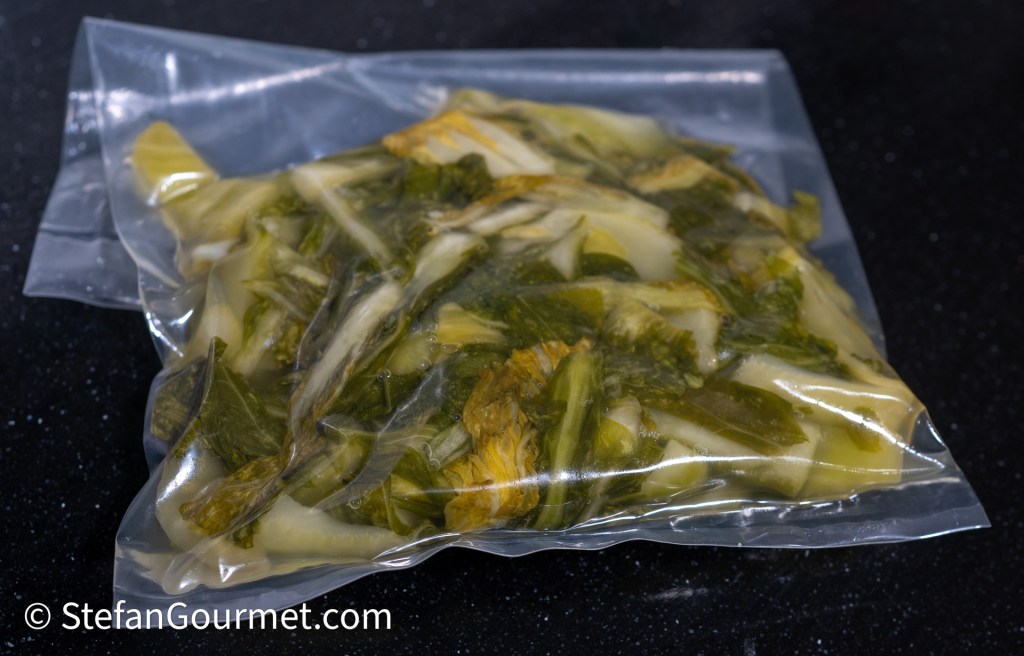
They will keep for weeks if you keep them submerged in the brine, or drained and vacuum sealed.


This dish is so simple but totally new to me. Was brought up on sauerkraut and now cannot get enough of kimchi! So am very interested to learn. Find the use of sticky rice most interesting – thanks!
LikeLiked by 1 person